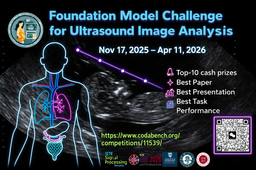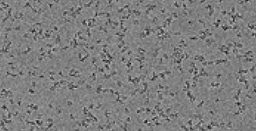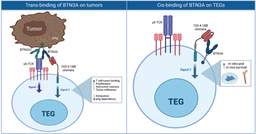What do we really know about dairy and chronic diseases?
Published in Cell & Molecular Biology, Immunology, and Agricultural & Food Science
CVD: the most major pandemic
Cardiovascular diseases (CVD) cause the death of 18 million people worldwide and they are the most lethal of all the chronic diseases. In Great Britain and Ireland, 168,000 and 9,000 die every year, respectively. In other words, in Great Britain, 460 die every day from CVD.
In relation to CVD, for decades, the understanding was, wrongly, based on the “lipid hypothesis”, i.e. cholesterol is the cause of CVD development. But, today, this school of thought looks aged; it’s actually wrong. Lowering the plasma cholesterol levels, as statins do, doesn’t reduce the cardiovascular risk (CR) and also in some cases they have strong side effects.
However, statins are widely prescribed, and the global statins market size reached US$ 15 Billion in 2021 and it’s forecasted to reach US$ 22 Billion by 2032. The global market for statins is estimated to expand at a compound annual growth rate (CAGR) of 3.5% during the forecast period.
On a personal note, a friend of mine few years ago (Joe, not his real name) had some chest pain and he visited his GP. After all tests done, the levels of serum cholesterol were deemed high by his GP and the doctor prescribed Joe statins. Two years after this, Joe developed diabetes type II. And now Joe is taking statins for his cholesterol levels but also medication for his diabetes. Why did this happen? What should have happened instead?
We have demonized cholesterol and this demonisation has lead to the creation of statins. Statins, in lay terms, are medications that block completely the biosynthesis of cholesterol in our body. In fact, statins cause our bodies to starve for cholesterol!
The role of cholesterol
However, cholesterol is an essential lipid in our body that interacts with the phospholipid bilayers in the cell membrane and it increases membrane packing. The role of cholesterol in membrane fluidity and integrity is vital. Also, cholesterol takes part in signal transduction, intracellular transport, nerve conduction and in a number of signalling pathways. Apart for these roles, cholesterol is an important precursor molecule in several biochemical pathways, such as the biosynthesis of vitamin D and steroid hormones, e.g., adrenal gland hormones and sex hormones.
The impact of inflammation
When we talk about chronic diseases, we need to address inflammation and how inflated organs and cells react eventually causing CVD and other chronic diseases.
Factors that promote chronic inflammation are:
- Smoking
- Air and water pollution
- Bad diet (rich in processed foods and poor in anti-inflammatory compounds)
- Sedentary lifestyle
- Chemotherapy
All the above, they inflame our cells and a number of oxidative and pro-inflammatory biochemical pathways are switched on.
Let's move now to dairy foods.
Dairy lipids
As we reviewed in 2018, the negative perception of dairy fats stems from the effort to reduce dietary saturated fatty acid (SFA) intake due to their association with increased cholesterol levels upon consumption and the increased risk of CVD development. Institutions that set dietary guidelines have approached dairy products with negative bias and used poor scientific data in the past. As a result, the consumption of dairy products was considered detrimental to our cardiovascular health. In western societies, dietary trends indicate that generally there is a reduction of full-fat dairy product consumption and increased low-fat dairy consumption. However, recent research and meta-analyses have demonstrated the benefits of full-fat dairy consumption, based on higher bioavailability of high-value nutrients and anti-inflammatory properties.
Zivkovic et al. have studied all the relevant literature on the anti-inflammatory activities of a number of medications that lower the lipid levels in blood, but there was no clear conclusion. It is rather safe to say that the development of CVD is multifactorial and is not directly related only to cholesterol levels. This is where the role of dairy comes into play given that more than six billion people worldwide consume milk and milk products.
After 28 years since I got my first job as a Lecturer in Food Chemistry at the University of Leeds (1998), my research interests have shifted to inflammation, nutrients with anti-inflammatory bioactivities and CVDs.
Last October, I published my first monograph:
where I advocate that we need to address diet and lifestyle as tools to prevent CVD and inflammation.
In particular, I write there:
"We would need to modify our approach against CVD. As in cancer research, we need to distance our practices from general chemotherapy (that kills our immune system) and move towards personalised treatments towards specific types of tumour cells, we would need to follow the same approach in relation to inflammation and CVD. Personalisation is the keyword here: personalised diet (rich in polar lipids that are found in fermented foods, olives, olive oil and marine foods) and personalised hobbies. Each one of us is unique and different to the person who is next to us or other members of our family. As the concept of personalised nutrition is gaining ground, we would thus need to become the personal trainers of our body and mind using a holistic approach."
Research questions
On the research front and over the last years, I have shifted my teaching and research philosophy towards creating the right questions but not giving definitive answers.
Here, you can find some views around dairy, inflammation and polar lipids and a question on how these are linked.
There are some fundamental questions around dairy lipids, inflammation and the food matrix that we need to address:
- do we really know about the value of polar lipids?
- have we focused wrongly to the fat contents of dairy?
- why don’t we have more fermented dairy in the food and nutraceutical markets?
- which research direction should we follow?
Dairy foods have the potential to reduce inflammation. Further research can provide more structure-function answers to fully understand the positive impact of dairy foods to our health.
In parallel, it's high time, therefore, for nutrition policymaking organisations to update their approach and provide new guidelines where dairy foods would be recommended for daily consumption.
Follow the Topic
-
Dairy Science and Management

This is an open access peer-reviewed journal that aims to publish innovative research about the management of dairy animals, the production of dairy products and the related food security considerations.
Related Collections
With Collections, you can get published faster and increase your visibility.
Microbial Sensitivity Testing in Dairy: Staphylococcus aureus and Antibiotic Resistance
The dairy industry is a cornerstone of global food security and nutrition, yet it faces significant challenges due to the rising incidence of antibiotic resistance, particularly related to Staphylococcus aureus and its associated staphylococcal infections. As we continue to advance our collective understanding in this area, we can better equip ourselves to develop effective management strategies that will safeguard animal health, enhance dairy production, and ultimately contribute to the well-being of consumers.
Antibiotic resistance in bacteria poses a serious threat not only to dairy cattle but also to public health, as resistant strains can be transmitted through food products. The implications of this issue are far-reaching, influencing not only the economic viability of dairy operations but also the overall sustainability of the food system. Therefore, it is crucial to deepen our knowledge surrounding microbial sensitivity testing. This can aid in identifying effective treatment protocols and minimizing the development of resistant strains.
Recent advances in the field have demonstrated the potential of rapid microbial sensitivity tests, allowing for quicker diagnosis and treatment decisions. Techniques such as molecular diagnostics and whole-genome sequencing have significantly improved our understanding of the genetic determinants of antibiotic resistance in Staphylococcus aureus . Moreover, research into alternative therapies, including probiotics and bacteriophages, shows promise in mitigating the risks associated with antibiotic use in dairy herds.
We invite researchers to contribute to this special Collection, as your insights and findings are essential for addressing the challenges posed by antibiotic resistance in the dairy sector. Topics of interest include but are not limited to:
- Microbial sensitivity testing methodologies - Resistance mechanisms in Staphylococcus aureus - Epidemiology of staphylococcal infections in dairy - Alternative treatments for antibiotic-resistant infections - Impact of antibiotic use on dairy herd health - Policy implications for antibiotic stewardship - Consumer perceptions of antibiotic use in dairy - Technological innovations in microbial diagnosticsThis Collection supports and amplifies research related to SDG 2, Zero Hunger.
All submissions in this collection undergo the journal’s standard peer review process. Similarly, all manuscripts authored by a Guest Editor(s) will be handled by the Editor-in-Chief. As an open access publication, this journal levies an article processing fee (details here). We recognize that many key stakeholders may not have access to such resources and are committed to supporting participation in this issue wherever resources are a barrier. For more information about what support may be available, please visit OA funding and support, or email OAfundingpolicy@springernature.com or the Editor-in-Chief.
Publishing Model: Open Access
Deadline: Feb 13, 2026





Please sign in or register for FREE
If you are a registered user on Research Communities by Springer Nature, please sign in